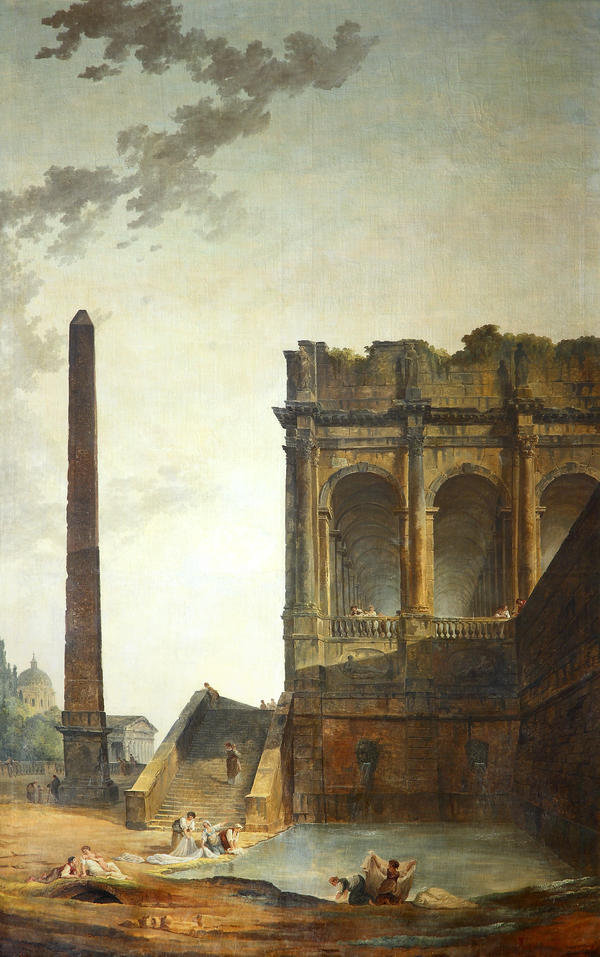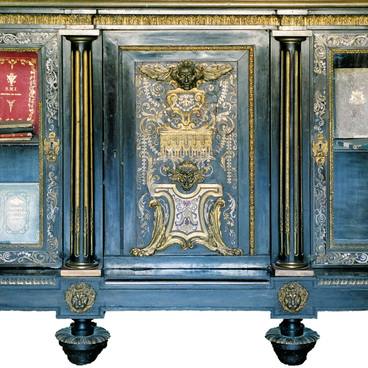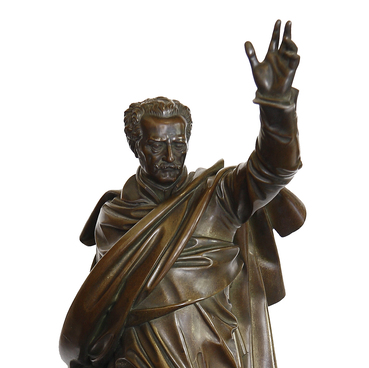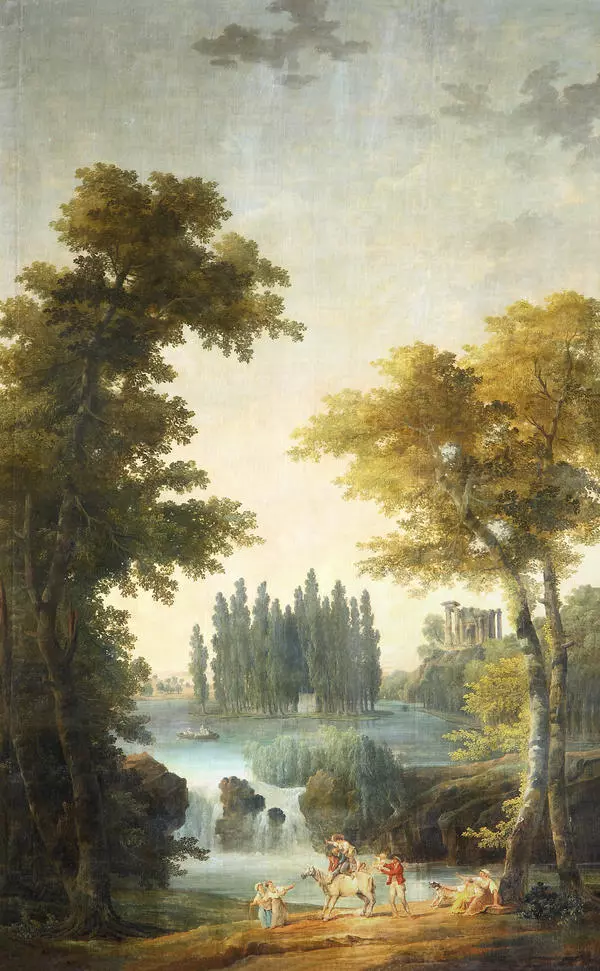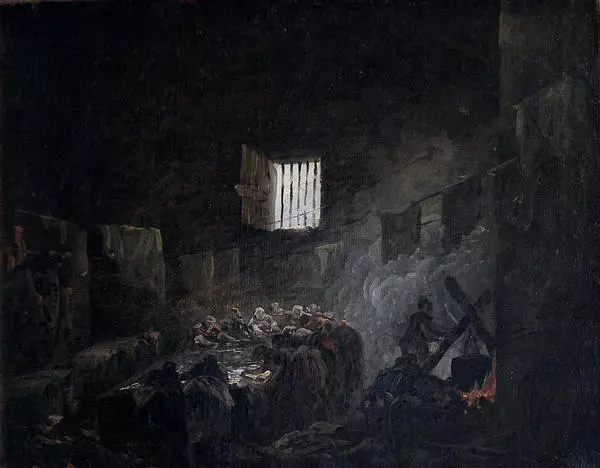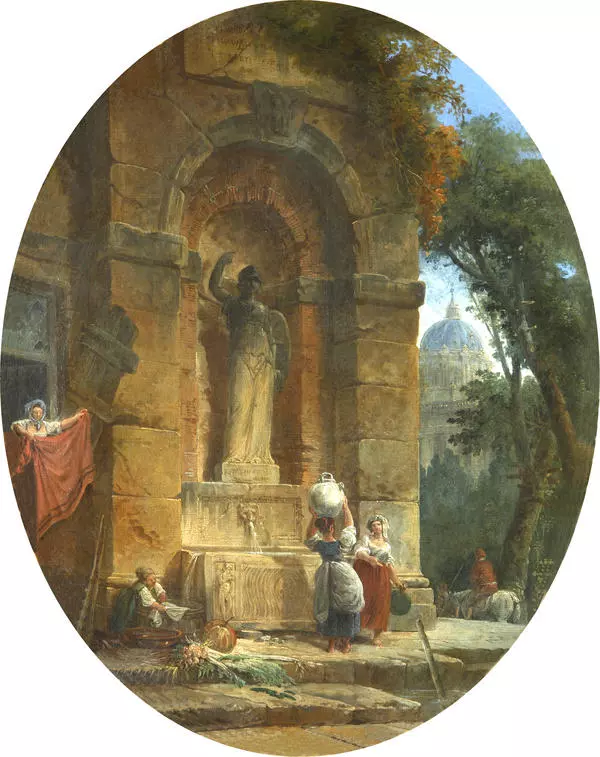The picture ‘Obelisk’ was acquired by Vorontsov in 1852. Since then it has been a part and parcel of the Parade Dining Room interior of the the Vorontsovsky Palace.
Most of the canvas is occupied by an image of a Renaissance-view building on a high basement from which the fountains are shooting. This building is the Madama Villa. The construction of the villa began in 1517 by the project of Raphael, Romano and Antonio Sangallo the Younger. The villa was built on the slopes of Monte Mario Hill as a country residence for Cardinal Giulio Medici, who then became the Pope Clement VII.
Most of the canvas is occupied by an image of a Renaissance-view building on a high basement from which the fountains are shooting. This building is the Madama Villa. The construction of the villa began in 1517 by the project of Raphael, Romano and Antonio Sangallo the Younger. The villa was built on the slopes of Monte Mario Hill as a country residence for Cardinal Giulio Medici, who then became the Pope Clement VII.
Later, the villa belonged to the daughter of Roman-German Emperor Charles V, Margarita Parma. The title ‘Madam’ was given to the king 's eldest daughter, and the villa was named after her. The building remained unfinished and was semi-destroyed as early as the 18th century.
This villa is depicted in many Robert 's works. Most often the artist portrays the central part of the building, and only the balconies stayed unchanged in all versions. On the panel from the collection of the Alupkin Museum-Reserve, the view of the building is balanced by the obelisk. The cathedral of St. Peter can be seen in depth behind the obelisk. Beams of silver light are pouring from the sky and gently wrapping the contours of the dome of the cathedral. They are bypassing the balconies, and illuminating the foreground. Looking into it, you can notice human figures, the liveliness of their poses, the variety of angles.
Hubert Rober was born in Paris on 22 May 1733 to a valet. After finishing his studies, he began to learn painting and drawing from the sculpture Slodtz, who was a fan of ancient art.
This villa is depicted in many Robert 's works. Most often the artist portrays the central part of the building, and only the balconies stayed unchanged in all versions. On the panel from the collection of the Alupkin Museum-Reserve, the view of the building is balanced by the obelisk. The cathedral of St. Peter can be seen in depth behind the obelisk. Beams of silver light are pouring from the sky and gently wrapping the contours of the dome of the cathedral. They are bypassing the balconies, and illuminating the foreground. Looking into it, you can notice human figures, the liveliness of their poses, the variety of angles.
Hubert Rober was born in Paris on 22 May 1733 to a valet. After finishing his studies, he began to learn painting and drawing from the sculpture Slodtz, who was a fan of ancient art.
In 1854, from the Royal Academy of Arts, Robert went to Italy, where he lived for more than 10 years. Here, his artistic taste was formed under the influence of the artists Piranesi and Panini.
The majestic ruins of antique buildings and imitating them post-Renaissance constructions remained the main theme of the artist 's work throughout his life.
In one of his Italian drawings, Robert wrote, ‘Rome, even being destroyed, teaches’.


